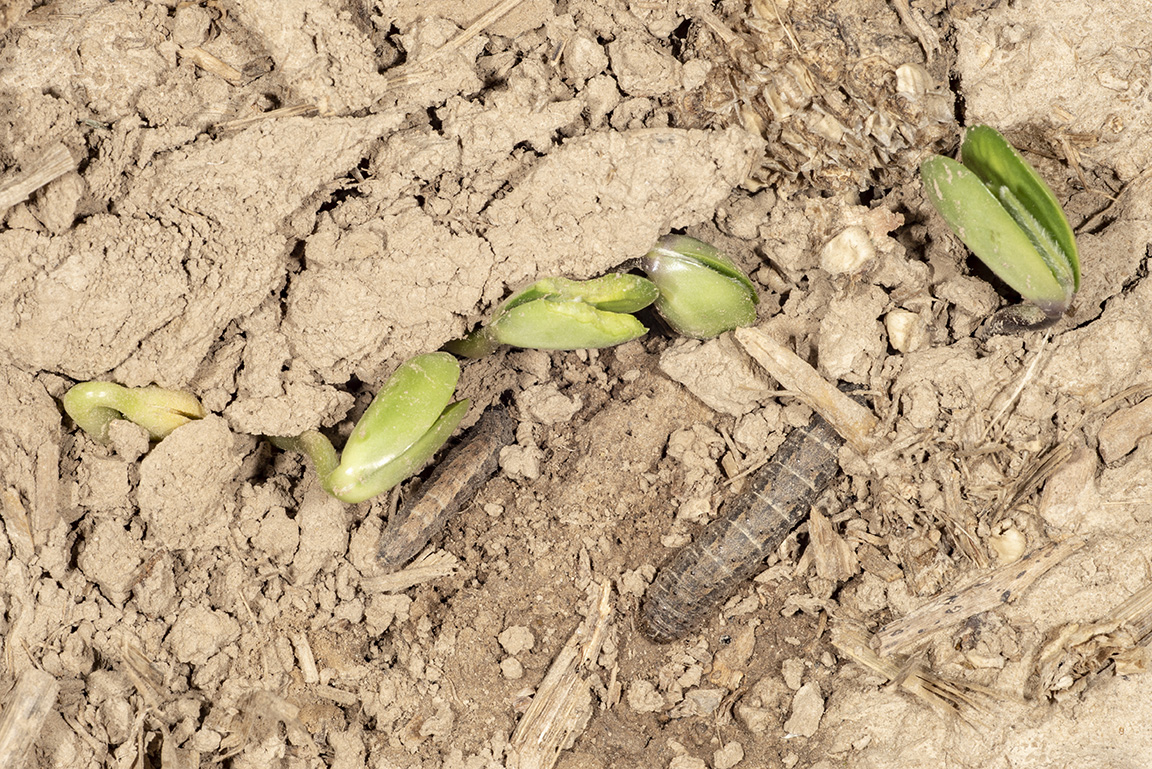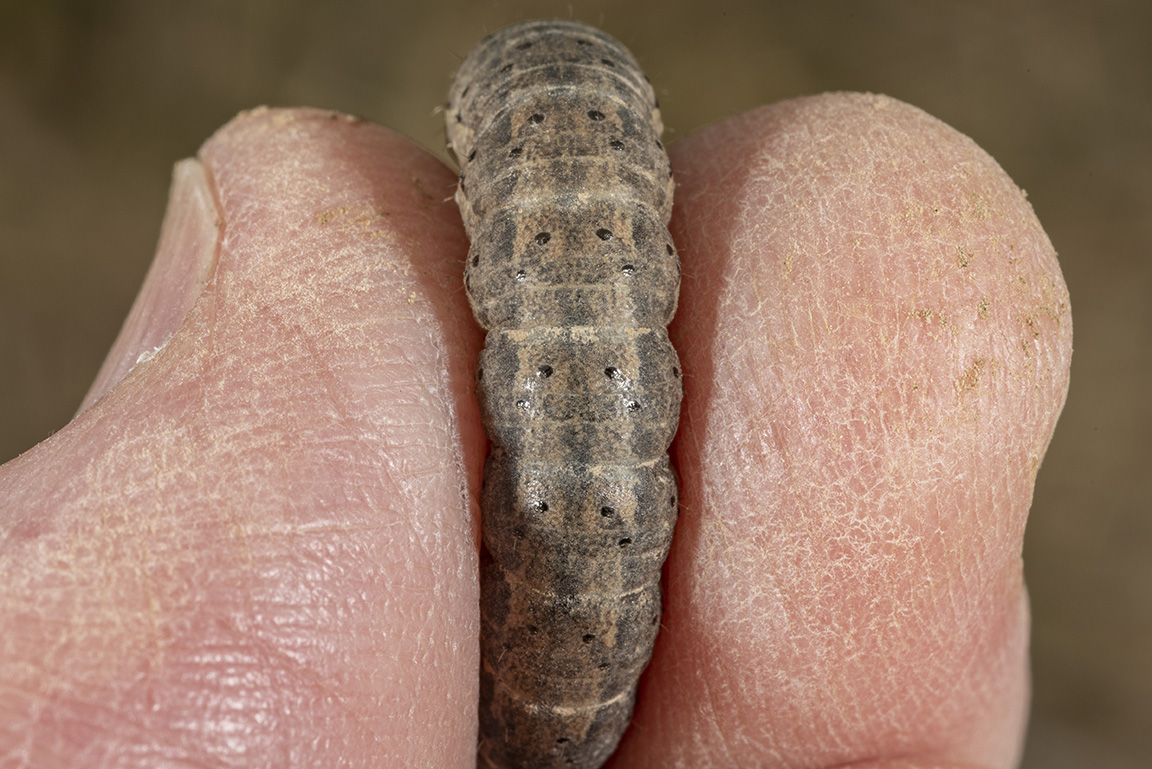It seems that the freezing temperatures, and snow, of just over a week ago has spurred an increase in the black cutworm and armyworm moth activity, see the accompanying pheromone trap captures. The dramatic swings in temperatures we have had are an annoyance to us, but to an insect dependent on heat accumulations for development, it may be the difference between minor damage to a wide-spread outbreak. In other words, egg-laying and hatching of these pests may have occurred, but it will be a couple of weeks before we know they full extent of this year’s threat to our row and small grain crops. This is why we monitor for moth arrival, and intensity of captures, coupled with temperatures to track their development. We are so fortunate in Indiana to have so many faithful trapping cooperators!
It isn’t uncommon to receive reports of insect damage in advance of heat unit-development models. Those models are based on temperature readings from relatively few monitoring stations, so they cannot reliably predict each and every environment. Many cutworm species look alike and identification is often confusing. Proper identification of one species, the black cutworm, is critical because it can be an economic threat to corn, whereas many other species are not. We already know that the black cutworm will cut or burrow into plants that can ultimately kill corn and cause stand losses. The black cutworm is our most commonly destructive species, but some fields, especially those with weeds or cover crops, will have a mixed bag of “other” cutworms; dingy, claybacked, and variegated among them.
The dingy cutworm, probably the second most common species, is primarily a leaf feeder and will rarely cut plants, and if it does, the cutting is above the ground. Because the corn plant up to 5-leaves can withstand severe defoliation without a yield loss (compare it to frost damage), treatment for the dingy cutworm is rarely justified. To confuse the issue, there are many other species that one may find while scouting. For example, the claybacked cutworm is not as common as the black and dingy, and its damage is a mix of leaf feeding and plant cutting. The dingy and claybacked cutworms overwinter as partially grown larvae, therefore finding cutworms 3/4 of an inch or more at this time would likely point to these species.
Moth captures, tracking temperatures, and subsequent field scouting in high-risk crops have been a successful pest management combination for decades for these species. Happy scouting!

While checking emerging soybeans on April 19 in west central Indiana, these cutworms and their damage were found. (Photo Credit: John Obermeyer)



